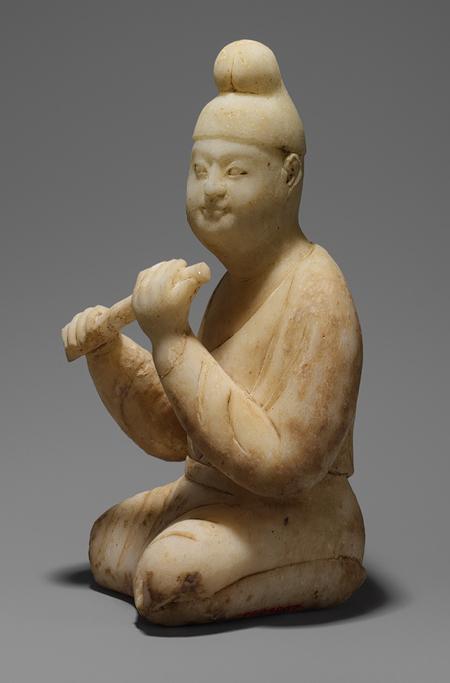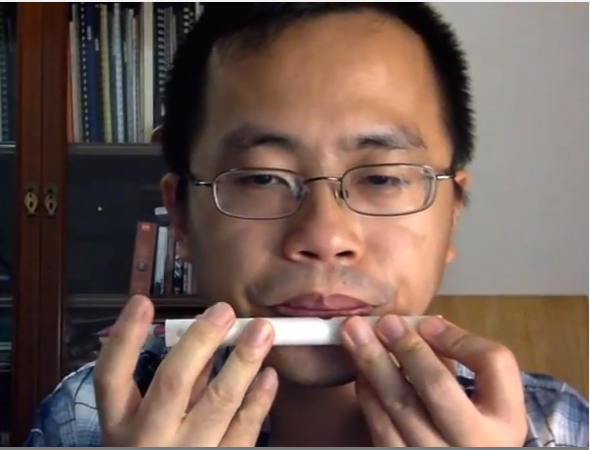If you had been living the high life near the Marquis Yi of Zeng in 433 BC, you might have been lucky enough to hear a performance on the Chi (篪), a transverse flute that was most likely used for court and ritual music. Unfortunately, in the more likely event that you weren’t, the instrument declined in favor, for reasons not entirely certain, and largely disappeared from music history. However, over the last few decades, there has been a small, but devoted, interest in bringing this instrument back to life.
 One person who has shown an interest in this instrument is the musician Cheong Li who decided as part of studying the instrument that he would try to create a 3D printed one. This application of 3D printing technology opens up a world for the study of extinct instruments, as explained by Lee in an interview with 3Dprint.com:
One person who has shown an interest in this instrument is the musician Cheong Li who decided as part of studying the instrument that he would try to create a 3D printed one. This application of 3D printing technology opens up a world for the study of extinct instruments, as explained by Lee in an interview with 3Dprint.com:
“I’m a musician and a novice to 3D printing. I’m not that capable in woodwork, but 3D printing allows me to draw and design my own instrument easily. One thing I’m particularly interested in is music archaeology. There are quite a lot of ancient instruments that have been forgotten or abandoned in the course of history. It would be very interesting to make them and be able to actually hear what they sound like.”
The Chi is a particularly unique instrument. Unlike the flute, fife, or recorder, the air is introduced into the instrument in the center and the holes for fingering are on either side of the mouthpiece. The ends of the flute are actually closed and the sound is produced as the air is blown into and then escapes from the holes that are used for fingering. Information about the flute is scarce and Lee is having to discover the instrument’s secrets the old fashioned way: trial and error.
 The position of the holes doesn’t seem to have much impact on the pitch but rather it is their size that has the greatest effect. The fingering itself is irregular, meaning that rather than playing a scale by lifting successive fingers, each note has a unique fingering configuration. As part of understanding the instrument, Lee has created a fingering chart in an effort to codify the relationships between pitch, frequency, and finger position.
The position of the holes doesn’t seem to have much impact on the pitch but rather it is their size that has the greatest effect. The fingering itself is irregular, meaning that rather than playing a scale by lifting successive fingers, each note has a unique fingering configuration. As part of understanding the instrument, Lee has created a fingering chart in an effort to codify the relationships between pitch, frequency, and finger position.
He described the process of designing the instrument in preparation for 3D printing:
“I’ve been using Rhino for Mac. It wasn’t too difficult to draw a simple tube like this. However, the most difficult thing is to determine where I should put the finger holes. I’ve spent some time studying pictures of Chi from various sources and tried to figure out the exact measurements. The tuning is not quite accurate yet and I think I’ll need to rework it.”
He printed his instrument as a single piece with the exception of a final cap for the end which was printed separately and then glued into place. The printing was done via 3D Hubs on a FlashForge Creator Pro and took only a few hours to complete. The instrument Lee printed is created entirely in PLA and the interior dimension is 14.2 cm with an extra centimeter on each end that acts as the wall.
 Now that his flute is printed, it seems to have raised more questions than it resolved and Lee plans on diving further into understanding its mysteries.
Now that his flute is printed, it seems to have raised more questions than it resolved and Lee plans on diving further into understanding its mysteries.
“There are quite a few questions about this instrument that intrigue me,” Lee notes. “For example, why is the fingering so unpredictable? How does a closed tube sound different from an open tube? To understand these things, I may need to collaborate with a scientist to calculate the physics behind it. It may help to solve a mystery in music history, and if possible, I hope that this instrument can be mass produced and played by more musicians. I’d love to write a tune for it as well!”
This is the third instrument that Lee has created through 3D printing; the first was a Xun, which is an egg-shaped blowing vessel, and the second a sliding whistle. The opportunity to truly understand an instrument that is presented through creating the instrument itself adds a new level of interaction that is open to more and more people through 3D technology. We may never know the way this instrument sounded when it was played 2,000 years ago, but thanks to 3D printing, we can hear it as it has been reincarnated today.
What do you think about the use of 3D printing to re-create ancient instruments? Let us know your thoughts in the 3D Printed Chi Flute forum thread over at 3DPB.com.
Subscribe to Our Email Newsletter
Stay up-to-date on all the latest news from the 3D printing industry and receive information and offers from third party vendors.
Print Services
Upload your 3D Models and get them printed quickly and efficiently.
You May Also Like
Reinventing Reindustrialization: Why NAVWAR Project Manager Spencer Koroly Invented a Made-in-America 3D Printer
It has become virtually impossible to regularly follow additive manufacturing (AM) industry news and not stumble across the term “defense industrial base” (DIB), a concept encompassing all the many diverse...
Inside The Barnes Global Advisors’ Vision for a Stronger AM Ecosystem
As additive manufacturing (AM) continues to revolutionize the industrial landscape, Pittsburgh-based consultancy The Barnes Global Advisors (TBGA) is helping shape what that future looks like. As the largest independent AM...
Ruggedized: How USMC Innovation Officer Matt Pine Navigates 3D Printing in the Military
Disclaimer: Matt Pine’s views are not the views of the Department of Defense nor the U.S. Marine Corps Throughout this decade thus far, the military’s adoption of additive manufacturing (AM)...
U.S. Congress Calls Out 3D Printing in Proposal for Commercial Reserve Manufacturing Network
Last week, the U.S. House of Representatives’ Appropriations Committee moved the FY 2026 defense bill forward to the House floor. Included in the legislation is a $131 million proposal for...

































